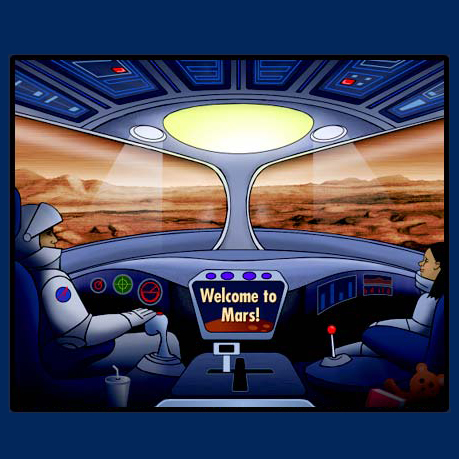Mars for Kids
Games and activities for kids. Read More
News Briefing and Televised Event Schedule: Landing commentary on Aug. 5, will be televised. A full schedule of live news briefings is available at: http://www.nasa.gov/ntvnews and http://www.nasa.gov/msl .
Curiosity's main assignment is to investigate whether its study area ever has offered environmental conditions favorable for microbial life. To do that, it packs a science payload weighing 15 times as much as the science instruments on previous Mars rovers. The landing target, an area about 12 miles by 4 miles (20 kilometers by 7 kilometers), sits in a safely flat area between less-safe slopes of the rim of Gale Crater and the crater's central peak, informally called Mount Sharp. The target was plotted to be within driving distance of layers on Mount Sharp, where minerals that formed in water have been seen from orbit.
"Some deposits right inside the landing area look as though they were deposited by water, too," said John Grotzinger of the California Institute of Technology (Caltech) in Pasadena, project scientist for Curiosity. "We have a great landing site that was a strong science contender for earlier missions, but was not permitted for engineering constraints because no earlier landing could be targeted precisely enough to hit a safe area inside Gale Crater. The science team feels very optimistic about exploration of Mount Sharp and the surrounding region that includes the landing ellipse."
Mission engineers designed a sky crane maneuver, lowering Curiosity on nylon cords from a rocket backpack because the rover is too heavy to use the airbag system developed for earlier rovers. "We know it looks crazy," said Adam Steltzner of NASA's Jet Propulsion Laboratory (JPL) in Pasadena, leader of the team that developed the system. "It really is the result of careful choices." By designing the aeroshell enclosing Curiosity to create lift and be steerable, engineers were able to build a system that lands much more precisely instead of dropping like a rock.
JPL, a division of Caltech, manages the Mars Science Laboratory for NASA's Science Mission Directorate, Washington.
The NASA channel will be broadcasting and can be seen online: http://www.nasa.gov/multimedia/nasatv/index.html
For more information about the mission is available at http://www.nasa.gov/mars and
http://mars.jpl.nasa.gov/msl/ .
You can follow the mission on Facebook and on Twitter at http://www.facebook.com/marscuriosity and http://www.twitter.com/marscuriosity.
-- 4 p.m. - Possible New Images News Briefing
Image Credit: NASA/JPL-Caltech
Pages: 1 · 2






